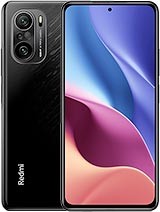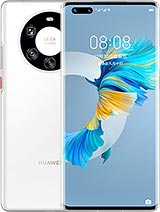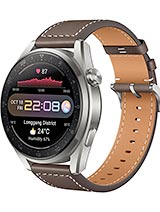Xiaomi Mi 11 vs Huawei Mate 40 Pro Speed Test By TechNick
The almighty, Huawei, mate 40 pro finally has some competition in the android 5 nanometer process note segments and that is the Xiaomi mi 11, the first smartphone to house Qualcomm's latest snapdragon, 888 chipsets, the snapdragon 888 powered me 11, is built on five nanometer process, no tech, the same tech in which the Karin 9000 powered mate 40 pro is using other than that they have pretty similar specs on paper. They both have eight gigs of lpddr5 ram and UFS 3.1 storage. However, the Xiaomi is running mini 12 skinned over android 11, while Huawei is still on android 10. We have maxed out the resolutions on both devices to HD plus, and we'll be using the max refresh rate 120 hertz on the m11 and 90hz on the mate 40 pro with battery optimizations disabled for all the apps on both devices we'll also be leaving the intended animation scales on full times on both devices over here, and we have performance mode enabled on the Huawei Mate 40 pro round. One will be all about boot fingerprints and face unlock round. Two will be about initial opening of app speed and round.
Three will be all about ram management. We're using my fingers over here so to keep things accurate, we're gonna, be popping GoPro footage at the bottom left-hand corner. I'm super excited to see which five nanometer process powered smartphone will come out on top. This is technic and without further ado. Let's go we're starting in round one with a simple boot to see which one can power on quickest.
It is indeed the Huawei Mate 40 pro picking up its first point in round one with 21 seconds two seconds quicker than the 23 seconds on the Xiaomi mi 11. Now going into the home screens of both devices of the year, the Huawei was once again quick over there and testing the optical fingerprint sensors found underneath the displays of both devices over here. The Huawei was quicker, the first two times and once again quicker the third time. Picking up its third point in round one, you have to remember we're focusing on when you see the wallpaper not so much when you actually see the app icons so disregard the animations over here, the Huawei Mate 40 pro is once again quicker with its 3d facial recognition system, as opposed to the 2d one on the 11. Finishing off round one with four points toward the mate 40 pro, as opposed to zero on the Xiaomi mi 11, making sure that the apps were all closed.
In the background over there same Wi-Fi max brightness performance mode on the Huawei, the Huawei opened up the first two system, apps slightly quicker than that of the Xiaomi, that being the settings app and the calculator app next app that we'll be jumping into over here is the camera app and going into that one. It is very, very close, but the Xiaomi mi 11 was a tad quicker than the mate 40 pro also once again quicker at switching to the selfie cam. So it's now two points a piece on both devices. The Huawei actually took the snap slightly faster, but the Xiaomi saved it to gallery quicker. So no point was allocated that time round going into the actual gallery over here.
The Xiaomi was a tad quick at that time going into the photo. The Xiaomi was quick at opening it up, but the Huawei was quicker at loading. The whole page, so once again, no point allocated over there going into adobe photoshop express. It is clear to see that the mi 11 was a couple seconds well, a couple milliseconds quicker than the mate 40 pro, but a few seconds quicker when going into the actual picture. Picking up its first points, as opposed to the two on the mate 40 pro going ahead and saving these pictures to gallery.
However, the mate 40 pros, UFS, 3.1 storage quickly, is trumped the 11 UFS, 3.1 storage, picking up its third points over there same as the gallery quicker than that of the m11 going into Adobe Premiere rush over here, the mate 40 pro went into the app quicker, but the mini 11 opened up the project quicker. So now six points for four toward the Xiaomi mi 11. I'm going to go ahead and export this 4k 25 frames per second clip we're going to compress it down to 1080p match the frame rate of 25 frames per second speed. It up bottoms right hand, corner and slow it back down the Huawei did it in 11.5 seconds, as opposed to the 13 seconds on the Xiaomi mi 11. Now six points for the Xiaomi as opposed to five on the Huawei Mate 40 pro just a one point difference between the two phones going into Spotify.
It was way too close to call, so no point was allocated that time around and going into astral VPN, which one can open up this VPN quicker. Since we need a VPN here in China. The mate 40 pro was the winner over here now matching points with the m11 at six points, apiece turning it on was too close to call and going into Google Chrome the non-centric google device. The mate 40 pro actually opened that one up quicker, taking the lead for the first time in this test, with seven points as opposed to six going into Facebook. Once more, the mate 40 pro opened up our first social media app slightly quicker than that of the m11.
Picking up its eighth point now two points ahead of the 11. Going into our next social media app, which is Instagram. It was way too close to call I pondered on this one for so long, but it was just too close to call between the two devices no point allocated over there going into twitter, though it was clear that the mi 11 opened that one up attack quicken now with seven points, just a one point gap between it's in the main 40 pro and going into YouTube. Once again, the non google centric made 40 pro open it up quicker, which one can go ahead and find my channel quicker over. Here we have to look for the channel on the Huawei, so I'm matching that on the Xiaomi, since I can't log into my Google account on the mate 40 pro it made.40 pro found me quicker, so 10 points for the Huawei as opposed to 7 on the Xiaomi. Now 11.
After going into my actual channel quicker over there and jumping into the video, the Huawei was quicker at opening up the video playing it quicker and loading the whole page quicker, not picking up its 12th point with a 5 point lead over the Xiaomi mi 11. Jumping into Netflix over here. The Xiaomi mi 11 was a tag quicker picking up its eight points and going into my profile. It makes it nine points now just three points away from the mate 40 pro: can it catch up before the round two and going into our first benchmark over here, which is geek bench 5.2.5? It was too close to call when opening the actual benchmark up. So no point was allocated over there running through it sped up bottom right-hand corner.
The Xiaomi was quicker 2 minute 34.5 seconds, as opposed to 2 minute 36 seconds on the Huawei. The Xiaomi had a higher single core score and the Huawei had a higher multi-core score very interesting. Now I'll give the point to the Xiaomi, since it actually finished through the test quicker there. So just two points between the two devices once again, the next benchmark app of years testing out the GPU this time around, which is 3d mark, we'll be running through a quick, a wild life bench. Tester VR, not the stress test going through this one we're going to speed it up once more bottom right hand, corner and see which one can get through it quicker and which gets the most points and frames per second.
It is indeed the Huawei, with 1 minute and 10 seconds, as opposed to 124 seconds on the Xiaomi, and we got 33.2 fps on the Xiaomi as opposed to 39.6 on the Huawei. That is a massive frame per second difference between the two. Considering that the chipsets in the Huawei does have a higher clock. Speed, though, I'm not surprised that front round going into subway surface our first game over here, which one can take it. It looks like it's going to be the Huawei, and it is indeed Huawei now, with a five point, lead over the Xiaomi mi 11 running that wonderful new five nanometer process, node attack, Qualcomm snapdragon 888 chipsets, going into tempo, run two.
It now furthers the gap, adding an extra point there now with 16 points, as opposed to the 10 on the Xiaomi. So now a six point gap, the biggest that we've had in round two so far going into our second last game. Second, last app of the 20 going into among us here surprisingly, the m11 opened this one up quicker picking up its 11 point now back down to five points below that of the mate 40 pro, no way that the Xiaomi can come back and take over the mate 40 pro, since we only have one game left in round two over here, which one can open up pub g mobile quicker than the other spit at that bottom right-hand corner. It is indeed the Huawei Mate 40 pro with 20 seconds over there, as opposed to 21.5 seconds on the mi 11 wrapping up around 2 with 17 points. On the Huawei, as opposed to 11 on the Xiaomi, with a six point, lead there for the Huawei going into ram management over here talking about round three, we have eight gigs of ram on both devices lpddr5 ram on both devices over here.
So we shouldn't have any issues, and we did disable all of these apps in terms of battery optimization, but the Huawei has kept three apps open now so far where the Xiaomi has killed them. Now, it's four. After going into Spotify going into astral VPN, they both kept that one open same thing with chrome. Five points now for the mate 40 pro six points now for the mate 40 pro Instagram. Now with seven points.
This is insane. Xiaomi have really not addressed the issue when it comes to ram management. I've tried everything. I've tried, disabling mini optimizations in the developer options before I've tried disabling optimizations for each individual app. Of course, if you lock these apps, it can keep them stored, but you won't be able to lock so many apps, so keeping 20 apps open in the background shouldn't be a problem for either of these powerhouse devices, but bear in mind that the Huawei does cost a hell of a lot more than the Xiaomi.
It's still no excuse that the Xiaomi is still fully optimized when it comes to ram management, though surprisingly, the Xiaomi keeps its last three games open over here, including among us and PUBG mobile. It still ends with a win to the mate 40 pro with 12 points in round three, as opposed to zero on the mi 11. Total score here, 33 for the Huawei Mate 40 pro, as opposed to 11 on the Xiaomi mi 11, no pun intended. If we focus just on raw performance focusing on round two here when it comes down to speed 17 on the mate 40 pro, as opposed to 11 on the mi 11. , I guess we're going to have to wait and see with that Xiaomi mi 11 pro launch imminent.
I hope that you guys enjoyed watching this video as much as I did. Making it a sub to the channel would be fantastic until next time. This is tech. Nick.
Source : TechNick


































